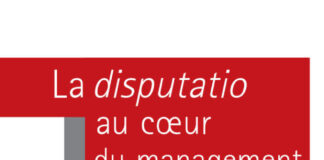The European Central Bank (ECB) decided on Thursday June 9 to end its monetary support measures by ending years of asset purchases and announced that it will raise its key rates in July to fight inflation, a first for more than ten years. Announced at the end of a meeting of the Board of Governors, relocated to Amsterdam, these decisions, widely expected, mark a historic turning point after years of cheap and abundant money policy.
While the other major central banks have already started to tighten their monetary policy, the guardians of the euro “intend to raise policy rates by 25 basis points at the meeting in July”, before “another rise in September,” according to the institution’s statement. This will be the first rate hike since May 2011.
Inflation dynamics accelerated by the war in Ukraine
Since December, the ECB has been surprised by the dynamics of inflation, which has accelerated further with the war in Ukraine. It reached 8.1% year on year in May, with fourteen out of nineteen countries in the euro zone being above this average. Unheard of since the introduction of the single currency and a level four times higher than the ECB’s target set at 2%.
The hoped-for decline in prices is long overdue: the ECB sharply raised its inflation forecast on Thursday until 2024. The institution now expects inflation of 6.8% in 2022, which should then slow to 3, 5% in 2023, but remaining 2.1% above the 2% target even in 2024. above 25 points, “will be appropriate at the September meeting”, warns the ECB.
For several weeks now, the “hawks” of the institution, supporters of greater monetary rigor, have been pleading for increases of 50 basis points.
Other central banks facing high inflation, such as the US Fed and the Bank of England, have already started a rate hike cycle.
End of asset buybacks
The ECB has locked itself into a very gradual monetary tightening schedule and departing from it now would undermine its credibility. Thus, the institution confirmed on Thursday that it would end “on July 1” its net redemptions of assets, a prerequisite before starting to raise its rates.
The spearhead, with negative key rates, of its action against deflation, these programs have enabled the ECB to buy bonds on the market with a vengeance to lower financing costs and revive the economy. The colossal amount of some 5,000 billion euros of bonds has been bought by the ECB since 2015. In the face of galloping inflation, this support is no longer necessary.
The exit from the negative interest rate policy initiated in 2014, which aroused waves of criticism in Germany in particular, is delicate. This policy means that banks are taxed – -0.5% to date – on their deposits entrusted to central banks for failing to distribute them via credits.
The ECB must take care not to disrupt European growth already seriously shaken by the consequences of the war in Ukraine. The institution thus lowered its annual growth forecasts on Thursday: GDP growth should be limited to 2.8% in 2022 in the euro zone, before 2.1% in 2023, against 3.7% and 2.8% respectively. % in the latest March forecast.
The ECB must also be careful that a rate hike does not lead to fragmentation on the sovereign debt market in the euro zone, in other words that European states do not borrow at too different levels.














